System-ized lighting: PIAA's approach to lighting the trail.
Too often, sunset requires this depressing decision. Daylight fades and we're forced to retreat as trail obstacles get uglier in the worsening light, especially during the winter months. Here in northern Idaho, winter solstice dark falls at 3:45 back in the "sticks and hills." Dark-thirty may be somewhat later for southerners, but most of us end up only 'wheeling on weekends as darkness gobbles up the after-work hours. The solution to the ensuing cabin (or is it garage?) fever is auxiliary lighting. When most of us go shopping for better lighting, we make one or more of the following flawed assumptions:
The first step is identifying individual 'wheeling needs. For most of us, those needs are either a mix of street and trail, or pure trail. As such, we've broken this article into two parts: lighting the trail and lighting the street. In this article, Part One, we'll concentrate on the more complex task of designing a system for trail needs. In the next article, Part Two, we'll discuss a systematic approach to lighting up the street. For both articles, we'll share how we equipped Project WomBAT, a rig that has been built up for 'wheeling in a range of terrain and conditions. For help and expertise, we turned to PIAA, leaders in professional quality halogen lamps for off- and on-road applications.
Identify Your NeedsLighting the night for off-roading means something different for each type of 'wheeling, depending on speed, terrain type, and climate. The needs of a Los Cruces rock crawler vary greatly from a Baja rocketeer. Desert rats like Project PreRocker need an early warning system to illuminate rapidly approaching terrain changes, obstacles, and wayward coyotes; the lamps must reach waaaaay out. Rock hounds who crawl over boulders at the pace of molasses need lateral lighting and rear lighting, in addition to the obvious short distance frontal needs. In regions that see every possible form of precipitation, lights must perform in fog and foul weather.
Goals in hand, we set out to determine which of the leading light manufacturers would best meet our requirements. We talked only to light manufacturers that focus primarily on lighting, and build their own lights, instead of having lights built for them. We focused on the few companies that offer the range of lamps necessary to establish a complete system. The obvious choice was PIAA (pronounced pee-uh). PIAA Corporation, USA, is the North American wing of its Japanese parent company, a company who has been committed to making the best driving lamps in the world since 1967. Their products grace the fronts of race leaders in everything from SCORE to LeMans. They have also adorned the grills of vehicles in my family since the late Eighties. When we challenged PIAA to light the night around
Project WomBAT, they
directed us to John Leitl, one of their helpful technicians. We described the
performance goals we had for the truck, explaining that we wanted a systems
approach that would be based off of our Wilderness
Accessories roof rack as well as off the WomBAT's custom front bumper. After
a series of discussions, we came up with a mix of lamps that addressed a
tremendous range of situations.
DistanceThe first thing we needed was a drastic increase in frontal illumination. The factory high beams fall woefully short on darkened, high-speed trails. With deer, ruts, downed trees, and other surprises lurking just outside the range of factory lighting, powerful driving patterned lamps are a must. Aftermarket driving lamps project a cone of illumination similar to or slightly narrower than factory high beams, but that pattern stretches much farther than stock. Efficient bulbs and single-purpose lens patterns allow significantly extended illumination patterns; but on-road use still must be friendly to oncoming traffic. As a result, even the best lamps built for any degree of on-road use and DOT (Department of Transportation) legality produce little more than 100,000-candlepower.
Because we were focusing primary on trail driving, rather than street driving, DOT approval was unimportant. PIAA considered all of these factors and suggested their time- and race-proven 80 Series lamps. Producing an incredible 300,000-candlepower, the 80 Series lamp can be ordered as the dual-beam 80 Racing lamp and the thinner-profile single beam 80 Pro XT Racing lamp. Their massive 7" reflectors, rock-solid housings, and hardened prism-cut lenses all speak to their no-holds-barred designs. Using Garvin's standard light mount on the
Wilderness Accessories rack, no depth restriction existed. PIAA markets this
lamp with an extremely tight-pattern, long-throw pencil beam, and also with a
fog pattern, but we selected the driving pattern. This lamp comes with a clear
lens, 135/90 H-4 bulb, and stout plastic cover. Although sold individually, we
elected to use a pair of the versatile, dual-beam 80s. Unlike other PIAA lamps,
the 80 Racing lamp's wiring harness must be ordered separately, to best match
bulb and harness capacities. While PIAA offers H-4 bulbs up to the 180/135 watt,
we chose a more conservative 150 watt harness with dual switches that allow
separate control of on/off and high/low beam.
CorneringThe 80 Racing lamps effectively address straight on, distant viewing needs, but driving trails also demands illumination of the trail corners. Trail driving, unlike high-speed street driving, requires wide coverage in corners more than length of light distances. Forward corner lights should cover the terrain between the front beams and the driver's sight line out of the front doors.
PIAA suggested a fog pattern, with a well-dispersed light pattern and low beam-like strength, their 85 watt 520 Series in the fog pattern. Both the 520 driving pattern and the fog pattern use an ion crystal lens. This advanced lens design transforms the bulb's white light into amber, yellowish light without diminishing output. PIAA 520s crank out a full 60,000-candlepower, far more than most other fog lamps, and second only to PIAA's 80 Series line. Unlike other PIAA lamps, the 520 lamp comes with grid-like covers for protection against branches rather than full face plastic covers. Although unique-looking, these guards off minimal protection against flying gravel.
Lateral & RearwardThe most often overlooked lighting need is lateral illumination, followed closely by rearward lighting. Similar to cornering lights, rearward and lateral lighting demands more breadth than dramatic distance illumination.
For this application, PIAA again recommended a fog pattern, but this time suggested a light with more conservative output. The 40 Series is modest in both price and power consumption, but the stamped steel housings and prism-cut lenses are by no means cheap. PIAA markets the Series 40 in both rectangular and round models, and all ship with 55 watt bulbs. We chose the clear round fog, positioning one at
each rear corner of the Wilderness Accessories rack, pointed diagonally to the
sides for lateral fill. We mounted a second pair of these lights on the rack
above the rear doors to handle all rearward lighting.
Installation
A quality roof rack was essential for achieving our goal of versatility for Project WomBAT. The Garvin Wilderness Accessories rack system has proven its indispensability many times, but it also makes a great foundation for lights. [Note: Check local and state regulations for maximum light mounting height, and especially use of light covers].
Garvin makes both standard and universal mounts:
On the WomBAT, we used a rack-mounted relay box to avoid multiple long runs of thick wire and cramming four relays into the cramped engine compartment. We used an exterior grade 8"x10"x10" steel electrician's can for the rack-mounted relay box. We sealed it, painted it, and attached a drain plug and hose to the bottom with an epoxied t-nut.
We then bolted relays to the inside of the box and routed the wires through the box's smallest punch-out hole. Split flex tubing protects the wires and silicone minimizes water penetration. We mounted this box to the rack flooring using U-clamps. Painted black on the sides and white on top for heat reflection, the relay box blends well with the rack, the lights, the Cabelas carry-bag, and the rack-mounted spare Bridgestone M/T. We used split flex tube and zip ties to protect all wires routed along the rack and the truck body. Roof-mounting the lights and the relays was challenging, but the results are sturdy, safe, and weather-resistant, and the pairs of lights can all be operated independently of each other.
PerformanceMy first experience with the power of PIAA lights was years ago on a Honda Prelude. Driven hard through narrow windy West Virginia back roads, the car desperately needed better lighting if the myriad deer I encountered were to remain scared but not scarred. After I installed new Euro 200mm headlights, PIAA 80/100 watt bulbs, and a PIAA wiring harness, I could see deer eyes glowing far into the distance. After that, my brother installed a pair of the 80 Racing Series lights, which were even more impressive. One evening, a coworker thought my brother's car was an off-course airplane was landing in their office parking lot.All of PIAA's lights delivered just as promised -- these lights pack a ton of punch. PIAA's ion-crystal 520's don't merely send white light through a yellow lens, they use advanced ion-crystal lenses to broadcast a moderate yellow-ish tinted light. We wondered if yellow light would be distracting, but it is easy on the eyes as it lights up the landscape, and really shines when the weather turns ugly. From their corner mounts on the Garvin rack, the 520s reach far, their beams stretching out to illuminate corners and the 9-to-12 and 12-to-3 o'clock positions of the dial. The 80s overlap the coverage of the 520s, but reach much further out. In effect, the WomBAT's stock headlights serve to fill in the gap between these two frontal sets of lamps. The 80s with their 135w high beams offer tremendous early warning of terrain changes. The driving pattern illuminates distances that are effectively beyond the speeds of most off-roading. The night goes from a black unknown to a landscape of certainties, instantly causing the driver's confidence to skyrocket. Finally, the lateral and rearward 40 Series fog pattern lamps give a wealth of illumination. Their approximately 80 degree pattern of light makes it easy to see what lies on either side of you, as well as what is hidden to the rear. This is a great advantage for tight woodsy trails, canyons, or other hazards. Running the dual pairs of 40s means you can maneuver without hesitation, backing up or jockeying for the right line through rocks, or simply lighting up the area to your rear while you sink a Pull Pal as a rear anchor. This powerful lighting system can blind others, but during proper use, rather than abuse, these lights really shine. Landscape that was formerly pitch black becomes brilliantly illuminated, and unknown trails full of shadowy hazards, in PIAA's near-daylight, become navigable trails with obvious lines through the well-lit obstacles. Darkness no longer sends you scurrying for camp or home. Wanna explore into the night? No problem!
ConclusionA well-designed lighting system offers many advantages over the haphazard approach so often taken with auxiliary lighting. Lights go from being visual accessories to vision-improving necessities. If planned with the help of an experienced technician, and proper consideration given to alternator output and mixed-uses, virtually any driver's lighting needs can be met. Choose products from PIAA's line-up for a long-lasting and powerful component-based lighting system.Combined, these matched sets of PIAA lamps provide a simple and effective system of illumination. They reach out at all angles and at the necessary distances for a variety of wheeling conditions. They are also rock-solid in construction and each provides simple yet capable adjustments.
PIAA Beaverton, OR 97006 800-321-1191 503-643-7422 503-643-9144 Fax |
Follow @Off-Road

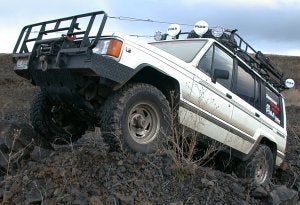 Project WomBAT's system
of PIAA lights look almost as great as they work.
Project WomBAT's system
of PIAA lights look almost as great as they work.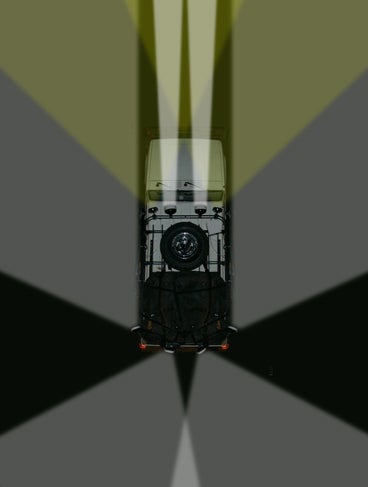 Project WomBAT's lighting
system has full coverage all the way around, to the front, front
corners, side, and rear.
Project WomBAT's lighting
system has full coverage all the way around, to the front, front
corners, side, and rear.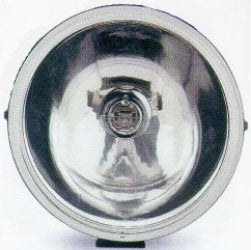
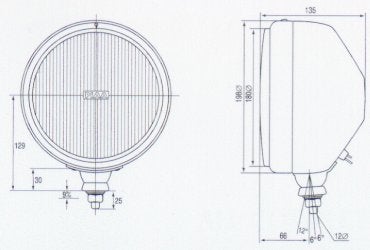 The 80 Series has a
crystal clear hardened prism-cut lens. Each 80 Series lamp has a 7.75
inch diameter and 5.5 inch depth.
The 80 Series has a
crystal clear hardened prism-cut lens. Each 80 Series lamp has a 7.75
inch diameter and 5.5 inch depth.
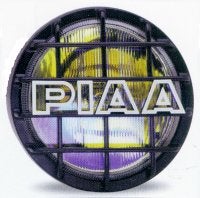
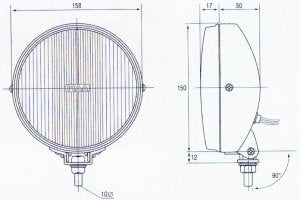 The 520 Series has a
fluted ion-crystal lens that produces weather-friendly yellow tinted
light without using efficiency-limiting filters. Each 520 Series lamp
has a 6.125 inch diameter and 2.875 inch depth.
The 520 Series has a
fluted ion-crystal lens that produces weather-friendly yellow tinted
light without using efficiency-limiting filters. Each 520 Series lamp
has a 6.125 inch diameter and 2.875 inch depth.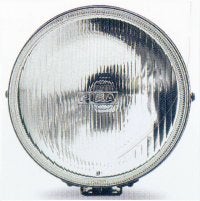
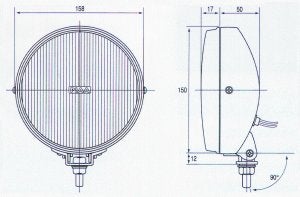 The 40 Series has a
fluted prism-cut lens. Each 40 Series lamp has a 6.25 inch diameter and
2 inch depth.
The 40 Series has a
fluted prism-cut lens. Each 40 Series lamp has a 6.25 inch diameter and
2 inch depth.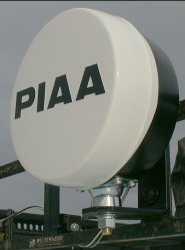 Garvin's sturdy 1/4"
steel mounts clamp tightly onto the
Garvin's sturdy 1/4"
steel mounts clamp tightly onto the 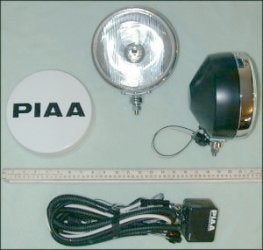 PIAA's preassembled
harnesses and couplers make installation a snap. The toughest part is
usually routing the wires.
PIAA's preassembled
harnesses and couplers make installation a snap. The toughest part is
usually routing the wires.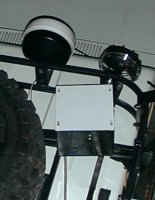
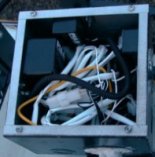

 Your Privacy Choices
Your Privacy Choices